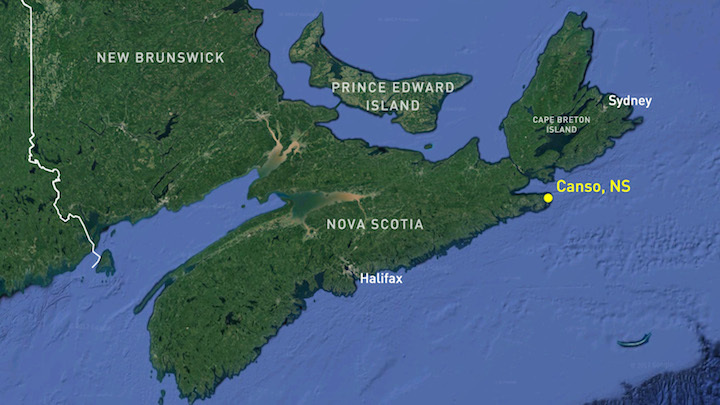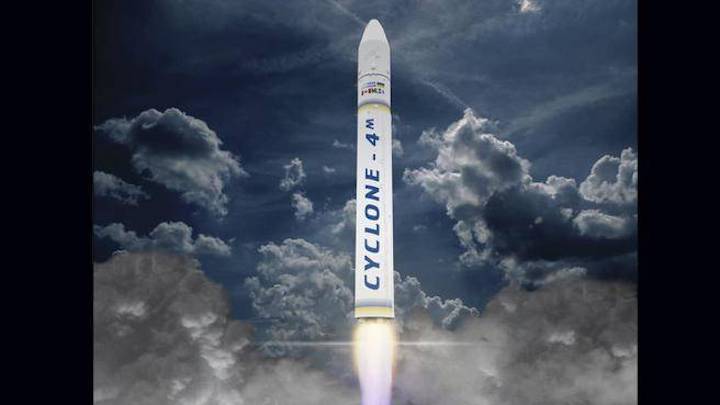There are several large development proposals making the news. The ones to be excited about are those where substantial private money is being invested.
Perhaps the most surprising is Maritime Launch Services, whose website tells us that it is “well on its way to expanding the Canadian commercial space industry. With the rapidly growing global demand for space launch services, MLS will bring the long established and mature space launch technology of Ukraine to Nova Scotia…. Canso, Nova Scotia has been selected as the launch site and design activities are underway for both the launch systems and spaceport.”
This is a substantial and rapidly growing field. There were 90 launches by commercial and state operators in 2017, each typically carrying multiple satellites. MLS hopes to grow to 12 launches per year, at a cost to customers of US$45 million per launch.
Site development costs are projected to exceed US$100 million. That is a lot of jobs for the Strait area. Best of all, the operators repeatedly stress that they are not seeking government financial support.
Next is the cluster of local and international operators seeking a viable technology to harness the immense energy in Bay of Fundy tides. Governments provided most of the $51-million cost of the enabling infrastructure, but the various trials are privately funded.
Five operators are trying different designs which are placed in the bay. If they work, the operator is paid a very high rate for the electricity produced, but given the small scale and short life of these tests, those payments do not have a significant impact on what ratepayers are charged.
Cape Sharp Tidal, one of the five operators, successfully deployed a two-megawatt turbine and connected it to the power grid in 2016. Each of the five is spending millions of dollars on designing, building, and deploying its test modules. That, and the associated environmental research, have been a boon to the Parrsboro area.
The really exciting prospect is that one or more successful technologies will lead to large-scale development of a vast renewable energy source.
The third example is the prolonged effort to establish a deep-water container port and associated handling and rail infrastructure in Melford. This is being developed and financed by SSA Marine, a company with marine terminal and rail yard operations in more than 250 locations around the world.
They have already spent over $50 million acquiring land and planning, and will need to spend another $48 million to create a rail spur that connects to the main line to Montreal. Except for accessing existing programs such as NSBI’s payroll rebate program, they do not expect to be seeking government support.
Melford’s advantage is its location, deep-water anchorage, and the ability to purpose-build a highly efficient handling facility. That said, completion is by no means sure, given the need for committed customers and carriers for the site.
An indication of their optimism is the request to prequalify candidates for the professional engineering work. If all goes well, they hope to start digging this year.
Contrast these stories with the rather extensive reporting and commentary on prospects for a CFL team and accompanying stadium in Halifax. A new stadium will cost $250 million or more and would occupy perhaps 15 acres of valuable land. Regina’s new Mosaic stadium cost $278 million, of which $73 million came from the city and $80 million from the province. Another $100 million came from a loan, which might not be available to an unproven franchise in Halifax.
Each year, CFL teams play two exhibition games, nine regular season games, and have a chance at one or two playoff games. Further uses of the outdoor stadium are unlikely beyond the occasional summer concert, for which the acoustics would be doubtful. The stadium will not be much to look at on the 340 or more days a year that it is empty.
HRM Mayor Mike Savage has wisely said he does not see the city in an ownership role of such a facility. The province would do well to take the same position. What is predictably lacking from this uneconomic proposition is any serious private money.
Likewise, CBRM Mayor Cecil Clarke has for years been promoting the idea of a container terminal for Sydney. Notwithstanding his efforts, a well-designed sales pitch on the website, and $38 million of provincial and federal government money to dredge the harbour in 2011, there has been no evidence of a private operator willing and able to invest the $1 billion needed to build the facility. If there was, a further $30 million would be required to bring the railway connection to the mainland up to scratch.
One might on the same basis challenge the $160 million of public money invested in the new convention centre. But it is part of a $500-million project, the rest of which is private money. In its first year, it will be used by one or more events during more than 150 days.
Since being elected in 2013, the McNeil government has wisely stayed away from making big loans or grants to stimulate employment. Doing so has allowed the decisions of private operators, with their own money at risk, to determine which projects move forward. That policy has served taxpayers well.
Quelle: Herald Opinions


